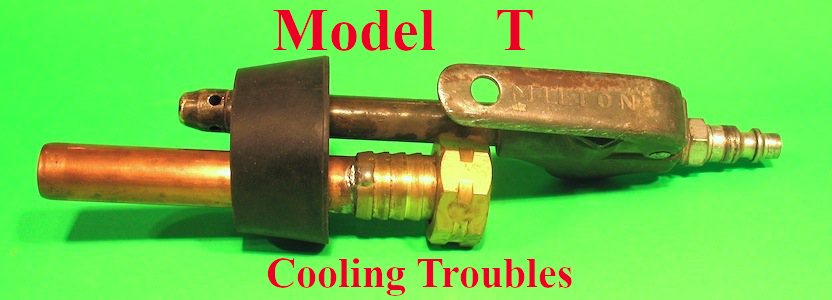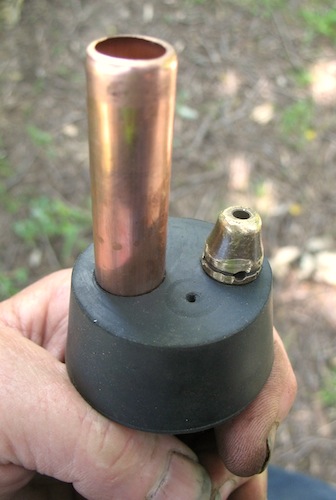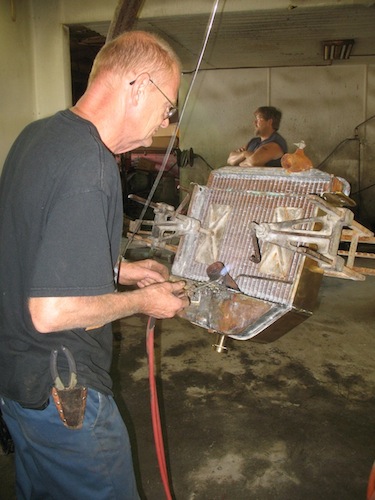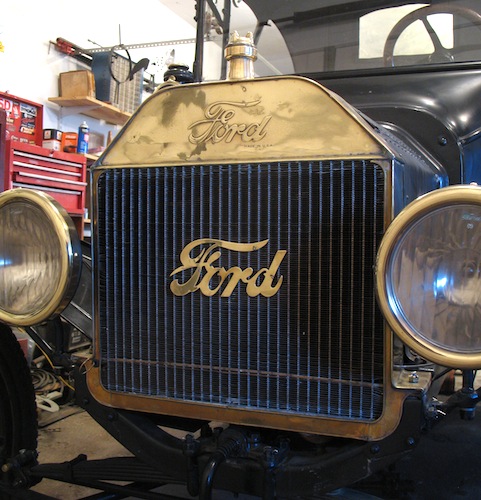
Cleaning
out the engine water passages is similar. Plug the water
inlet on the side of the engine and fill up with your
cleaning solution, and let it soak for several hours.
When it comes to flushing out the crud, it's a good idea
to use a device like this that will shoot compressed air
and water through the passages. It's made with a rubber
plug that fits the water outlet on top of the engine. A
piece of tubing with a hose fitting puts in water, and
an air nozzle shoots in compressed air. A small hole
though the plug allows air to escape and lets water in
to fill up the passages. The flushing is done like this.
Another route of attack is done with the water passages dried out. Use a piece of steel cable with a frayed end. Put the other end in a drill chuck and use it as a rooter, shoving it into the freeze plug holes and other openings to knock loose all the crud you can reach, then blow out all the loosened debris with compressed air or suck it out with a shop vac.
Another route of attack is done with the water passages dried out. Use a piece of steel cable with a frayed end. Put the other end in a drill chuck and use it as a rooter, shoving it into the freeze plug holes and other openings to knock loose all the crud you can reach, then blow out all the loosened debris with compressed air or suck it out with a shop vac.


